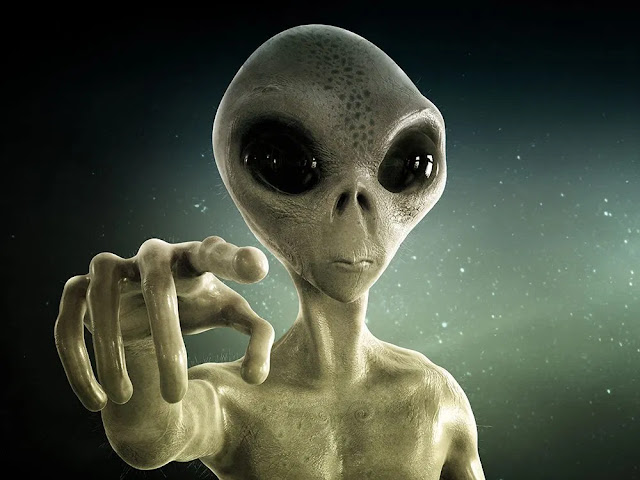The point of chapter 10 is to try to lay out the skills needed for critical thinking, something that humans are usually not good at unless they try to be good at it. Novella asserts: “Arguing is something that everyone does but few understand. Yet arguing is an essential skill of critical thinking.” Fortunately, the understanding needed is easy to grasp. Unfortunately, it takes time and sustained effort to learn to apply it.
Basic terminology
Logical fallacy: A logical fallacy is reasoning mistake or error that makes an argument invalid. All logical fallacies are non-sequiturs, which are arguments where the conclusion doesn't follow logically from what preceded it. Novella describes it like this: “A logical fallacy is an invalid connection between a premise and a conclusion, where the conclusion does not necessarily flow from the premise(s) but is argued as if it does.” The human mind did not evolve to do precise logic and people make various kinds of mistakes unless they are aware of the errors and consciously try to avoid them. Instead of using formal logic, humans usually rely on informal logicArgument: An argument is what connects premises (facts) with conclusions (beliefs). Although people see arguments as something to be won and beliefs to be defended, that isn't how Novella sees it. Instead, an argument is an effort to find reasoned truth, not win points. To help people engaged in argument find truth, they would best try to find as much common ground as possible and then carefully proceed to engage with belief differences.
Assertion: An assertion is a stated or argued premise or conclusion without supporting evidence.
Premise: A premise is an asserted fact(s) that an argument is based on. These days, many, arguably most, political disagreements among people are pointless because they do not agree on the facts. There needs to be a logical connection showing the premises necessarily lead to the conclusion. If there are sufficient premises that are true and the logic is valid (and thus the argument is “sound”), then the conclusion must be true. For completeness, a conclusion based on an unsound argument can be true or false, e.g., all spheres are pretty, therefore the sun is a sphere.
Novella makes an important point: “There is no way to objectively resolve to resolve a difference of opinion regarding aesthetics, for example.” Thus to avoid bickering endlessly over inherently unresolvable, people can simply agree that the disagreement is unresolvable as a matter of aesthetics, moral choice and so forth. Inherent irresolvability appears to apply to many (most?) political disagreements where moral judgments are involved, e.g., what constitutes an impeachable act by a sitting president.[1]
Checking premises
The first thing to do when beginning to engage in argument, people would do well to check their premises or facts. Four problems can occur, (1) the asserted facts or premises are simply wrong, (2) the asserted facts or premises are possibly wrong and not verified enough, (3) a premise is hidden, e.g., evolution is false because there are not ‘enough’ transitional fossils, but the definition of transitional is different from the standard science definition, which makes the disagreement unresolvable, and (4) a premise(s) is based on a subjective judgment, e.g., an information source is ‘reliable’ without an independent assessment or a person asserting a premise that ‘feels’ correct.
Logical fallacies
1. Non-sequitur: All logical fallacies are non-sequiturs. The conclusion doesn't necessarily follow the premises. In giving his version of economic conditions in the US a few weeks ago, the president Tweeted: “Nobody has ever heard of numbers like that, so people want to find out: Why was it so corrupt during that election? And I want to find out more than anybody else.” Here, the non-sequitur was a false connection between the economy in October of 2019 and the 2016 election.2. Argument from authority: Appeal to authority can be probative, but it needs to be used carefully. Some non-experts in climate science, like me, tend to point to expert consensus about global warming, the human role in it and options to reduce it. Consensus expert opinion does carry some legitimate weight, but sometimes consensus is wrong. Sometimes, the appealed to authority really isn't an expert. Sometimes the appealed to expert is expert on one field but not the one at issue. Both undermines the persuasive power of the appeal.
3. Post hoc fallacy: This is among the most common fallacies. The fallacy goes like this: Since event Y followed event X, event Y must have been caused by event X. This argument is common in defenses of alternative medicines: “I took the pills and then felt better, therefore the pills worked.” The erroneous assumption is that because of their different positions on a timeline, the first event caused the second event.
The president used a post hoc fallacy when he asserted: “Since my election, Ford, Fiat Chrysler, General Motors, Sprint, SoftBank, Lockheed, Intel, Walmart and many others have announced that they will invest billions of dollars in the United States and will create tens of thousands of new American jobs.” Fact checkers found that those business decisions were make before the president was elected and not due to his role as president.
4. Whataboutism (tu quoque): This fallacy argues that since someone or some group did something in the past, doing it now is justified. The president and his supporters sometimes justify actions the president takes as justified because democrats did it. From my point of view, the whataboutism tactic appears to lead to a spiral down in civility and social norms. For example, the president asserted: “I will release my tax returns — against my lawyer’s wishes — when [Hillary Clinton] releases her 33,000 emails that have been deleted.”
5. Ad hominem fallacy: This is an argument that attacks the opponent or their motivations instead of their arguments or conclusions. Asserting that an opponent is closed-minded is a common form of this attack. Novella asserts that people accusing their opponent of being closed-minded tend to be “closed to the possibility that they are wrong.” In other words, there are times when a person one is engaged with is in fact closed-minded.
6. Appeal to ignorance (proving a negative, ad ignorantiam): This is a fairly common fallacy based on a belief that something is true because it has not been shown to be false. Proving a negative can be difficult to deal with and thus this fallacy can be difficult to deal with. For example, the president asserted the following to CNN about his election in 2016: “What PROOF do you have Donald Trump did not suffer from millions of FRAUD votes? Journalists? Do your job!” and “Pathetic – you have no sufficient evidence that Donald Trump did not suffer from voter fraud, shame! Bad reporter.”
7. False analogy: A comparison between two things are similar in one way are falsely claimed to be similar in a different way. An example is the president's complaint about how he sees his treatment by democrats: “All Republicans must remember what they are witnessing here — a lynching. But we will WIN!” The president is being investigated and criticized, but that is simply not the same as being lynched. The president's claim ignores the difference.
8. Slippery slope: This fallacy assumes that one action or policy will necessarily lead to other, worse outcomes. The mistake here is the belief that one action, e.g., a law that requires universal background checks for gun purchases, will lead inevitably to an extreme ultimate position, e.g., all guns in private hands will be taken away by force.
9. Straw man fallacy: Here, a person uses a weak version or caricature of an opponent's argument and then attacks that. The opponent may not even hold the asserted straw man position. Novella argues that critical thinking demands that the strongest version of an opponent’s argument should be assumed and addressed. Examples include assertions by the president that (1) Democrats “don’t mind executing babies AFTER birth” and (2) Democrats “have become the party of crime. [They] want to open our borders to a flood of deadly drugs and ruthless gangs [and] turn America into a giant sanctuary for criminal aliens and MS-13 thugs.”
The red herring fallacy is similar to the straw man, but it asserts a fact or premise that looks true but is either false or irrelevant. An example is the president’s Tweet two days after Attorney General Sessions recused himself from Justice Department investigations of Russian attacks on the 2016 election: “Terrible. Just found out that Obama had my ‘wires tapped’ in Trump Tower just before the victory.”
10. Tautology (begging the question): This fallacy relies on circular reasoning where the premise assumes the conclusion. Thus the argument is that since A = B, therefore A = B. The two sets of A = B tend to be worded differently, making them sometimes had to spot. One example is the president’s argument that the impeachment inquiry is illegitimate because he did nothing wrong. Another example is expressed in a legal memo the president relies on in his own defense: “The President’s actions here, by virtue of his position as the chief law enforcement officer, could neither constitutionally nor legally constitute obstruction because that would amount to him obstructing himself.” That falsely argues the president cannot obstruct justice because the justice department works for him. Since the President tells the DOJ what to do, the memo argues, and any action he takes is leading justice, not obstructing it.
There are other fallacies, but these account for most of the common ones.
Footnote:
There are other fallacies, but these account for most of the common ones.
Footnote:
1. Pragmatic rationalism compared to arguments & logical fallacies: For people familiar with the pragmatic rationalism anti-ideology ideology argued here from time to time, its moral basis will probably jump right out as being in full accord with logic and what critical thinking requires. Specifically, the first two moral values are (i) conscious effort to try to see facts with less bias or distortion, and (ii) conscious effort to try to apply less biased conscious reason (arguments) to the facts that people think they see. The broad scope of disagreements that are not logically or objectively resolvable accords with the idea asserted here many times is that the best that people in civil, rational political disagreement can do is try to reach stasis, the point at which each understands why they disagree. Based on disagreements in my experience, about 85% of disagreements arise because of disagreements over facts.






